- Call us: 01444 237070
- Contact Us
- Stores
- Sign In / Register
-
- Back
- Used Cameras
- Used Lenses
- Used Video
- Used Film Equipment
- Used Stock Alert
- Used Accessories
- Recently Added Used Equipment
- Used Clearance
- Faulty
- Park Picks
- Sell or Part Exchange
- Trade-In
- Blog
- New in
- Call us
- Contact us
- Stores
- Sign in
- Categories
- Tips & Inspiration
- Reviews
- News
- Events
- Features
- Buying Guides
- Competitions
Sigma 24-70mm f/2.8 DG DN II Art Lens Review
For many creators the quest for the perfect lens collection ends with the holy trinity, which includes an f/2.8 wide zoom, standard zoom and a telephoto zoom. Arguably the most popular of these three is the standard 24-70mm f/2.8, thanks to its exceptional versatility.
The Sigma 24-70 2.8 Sony lens is one of the most prized of all, combining superb image quality with a relatively affordable price aimed at enthusiast and professional photographers. The L-mount version enjoys similar popularity for the same reasons, and our Sigma 24-70mm f/2.8 DG DN II Art Lens review uncovers what you can expect from this second-generation flagship zoom lens, including a specs comparison between Mark I vs Mark II versions.
Having owned the previous model for the last three years, I was very excited to have the opportunity to try the new one and see how it compares. The original Sigma Sony 24-70 f/2.8 Art is a brilliant all-rounder, and I was thrilled when Sigma agreed to send the mark II over. So let's dive right in and explore how it compares, beginning with the price of the newer zoom.
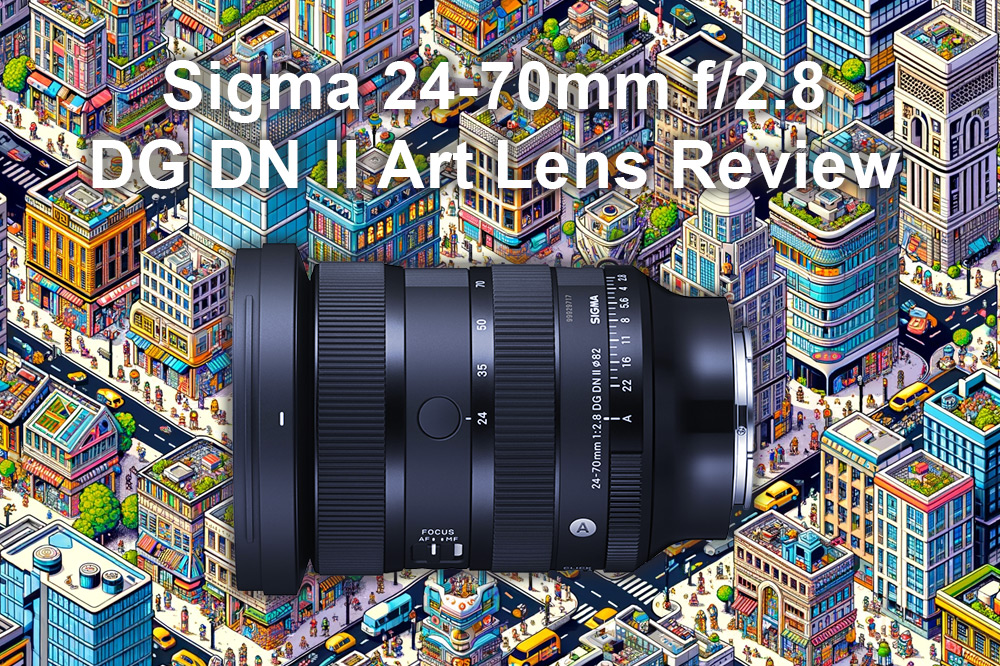
How much does the Sigma 24-70 f2.8 II Lens cost?
Sigma has done a remarkable job, as the Sigma 24-70mm f/2.8 DG DN II Art Lens costs £1179.00 for both Sony E and Leica L-mounts, which represents a modest price increase from its predecessor, yet remains significantly more affordable than comparable versions from other brands.
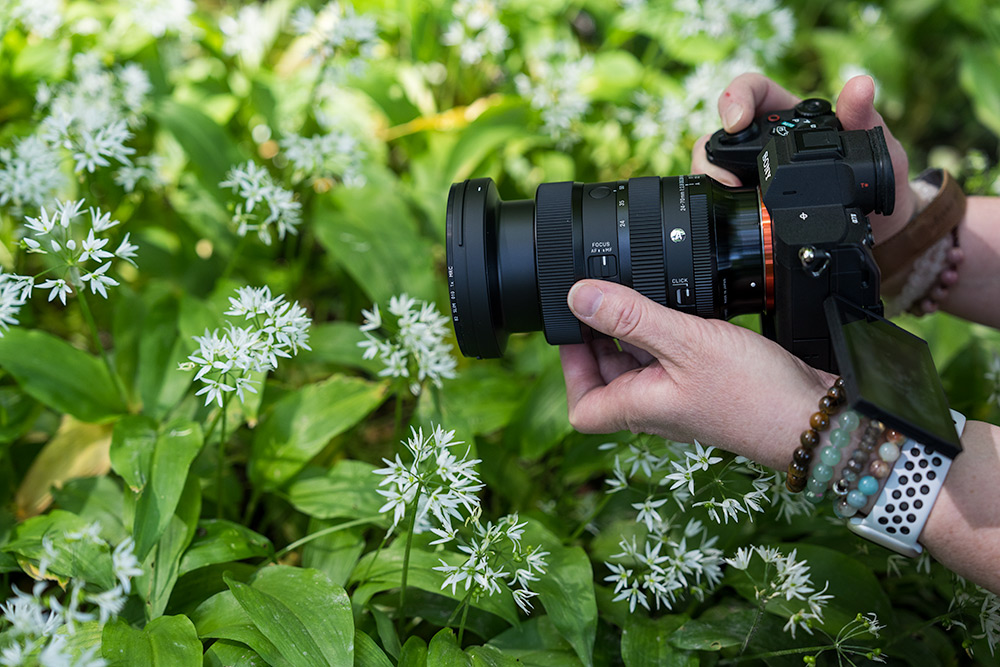
When was the Sigma 24-70mm f/2.8 DG DN II Art released?
Released on May 16, 2024, the Sigma 24-70mm F2.8 DG DN II | Art arrived just 4.5 years after its predecessor. This rapid development highlights the lens's importance, emphasising the role of a 24-70 f/2.8 as a flagship zoom for creators who rely on the zoom range.

Sample wild garlic II landscape photography @31mm. Camera settings: 1.6 sec. f/11. ISO 100 (tripod mounted)
Sample images
Nick Dautlich was fortunate to have nearly a week with the mark II lens, and embarked on several photo shoots spanning various genres in order to capture varied sample images. This provided ample opportunity to test its performance as an everyday general-purpose lens, which it will be for many photographers.
He covered subjects like cityscapes, landscapes and sunrise colours, night photography, environmental portraits, close-ups, as well as dogs running and birds in flight at the beach. This variety provided insights into the lens’ AF speed and tracking performance, resolution, colour rendition and ergonomics.

Sample ladybird close-up @70mm. Camera settings: 1/2500 sec. f/2.8. ISO 100
Sigma 24-70mm f/2.8 DG DN II Art key upgrades
The second-generation Sigma 24-70 Art lens has undergone numerous updates, making it smaller, lighter, and faster than its already compact and fast-focusing predecessor. Additionally, Sigma has enhanced image quality and added new features, which are especially useful for filmmakers, who benefit significantly from mark 2 upgrades.
Key upgrades include:
- 7% smaller and 10% lighter
- Improved resolution throughout the zoom range
- New aperture ring (with a click switch)
- New AF linear motor HLA (High-response Linear Actuator), with 3x quicker drive speed
- Slight improvements to minimum focus distance across the range
- One additional customisable AFL button (two in total)

Sample dog jumping at beach @33mm. Camera settings: 1/2000 sec. f/2.8. ISO 125
What hasn’t changed is equally important to the overall performance of the lens:
- 11-blade rounded diaphragm
- Strong flare and ghosting resistance
- Excellent build-quality with a dust and splash resistant structure
- Support for DMF and AF+MF
- Water and oil repellent coating on the front element
See the table further below in this review for a comprehensive look at the specifications.

Sample girl playing at beach @37mm. Camera settings: 1/1000 sec. f/2.8. ISO 100
Are there any differences between the Sony E and Leica L versions?
There are a few differences between the E and L versions, including compatibility with SIGMA USB DOCK UD-11, which is optionally available for L-mount only. The L-mount version also benefits from the ability to switch between linear/non linear focus, while only the Sony model is compatible with AF assist.
The weight is also slightly different, although this will be barely imperceptible to most users. Let’s explore what you can capture with a 24-70mm lens and why it is such as popular zoom.

Sample landscape photography @70mm. Camera settings: 1/40 sec. f/9. ISO 100 (tripod mounted)
What is a 24-70mm lens for?
The popularity of a 24-70mm lens is clear due to its versatile focal range, which covers 24mm, 35mm, and 50mm, each of which is broadly useful. The Sigma 24-70 2.8 for Sony and L-mount also benefit from a wide f/2.8 aperture, enabling excellent subject background separation.
Some of the most popular genres covered by this zoom range include:
- Landscape photography
- Cityscapes
- Environmental portraits
- Street photography
- Documentary
- Regular portraits and lifestyle shots
- Weddings and events
- Travel photography
- Close-ups
- Video
- Everyday general-purpose shooting
You can even capture subjects as diverse as products and food photography, close-up wildlife and sports or virtually anything, which doesn’t require a telephoto lens. It’s a brilliant focal range for everyday snapshots, so you can bring just one lens and capture everything from sunrise to sunset!

Sample seagull in flight @70mm. Camera settings: 1/2000 sec. f/2.8. ISO 1600 (cropped)
Why is the f/2.8 aperture important?
This Art series lens includes an 11-blade rounded diaphragm with a wide f/2.8 maximum aperture, which differentiates it from comparable Contemporary zoom lenses from Sigma. A wider aperture allows you to shoot at faster shutter speeds in lower lighting conditions and create a shallower depth of field.
This is very beneficial when capturing any subject, which you want to separate from background distractions, such as for portraits. The 11-blade opening renders smooth rounded circular bokeh balls and soft defocus areas, which can look stunning in certain situations.
A wide aperture is less beneficial to photographers who predominately captures landscapes, cityscapes or subjects at narrower apertures with a deeper focal plane. However the sharpness of this lens will be an advantage for these types of subjects, where detail, clarity and resolution are beneficial.
Let’s find out more about image quality next.
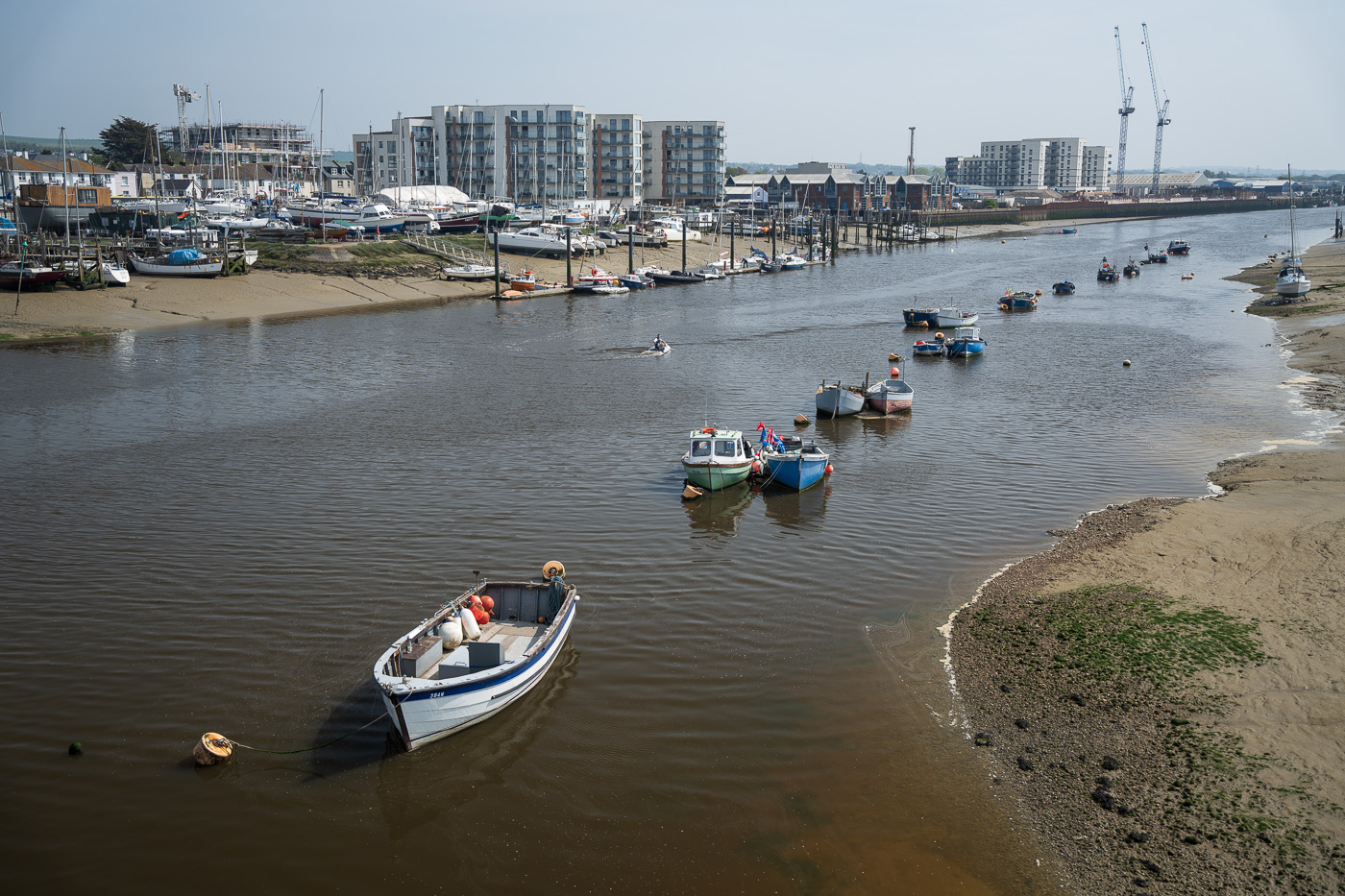
Sample river harbour @35mm. Camera settings: 1/1000 sec. f/2.8. ISO 100
Sigma 24-70mm f/2.8 DG DN II Art image quality
The original 24-70 lens offers outstanding image quality, and Sigma hasn’t strayed far from the optical formula, choosing to keep 19 elements in 15 groups. The newer mark II lens does include two additional aspherical elements, now featuring 6 FLD, 2 SLD, and 5 aspherical special elements in total.
The sum of these is to render high resolution, improve edge sharpness and control various aberrations including colour fringing, which it does very successfully. Whichever camera you use this lens will keep pace with the highest resolution sensors currently available.
I’ve owned the first version for several years and it has never disappointed, with incredibly sharp and detailed results, even on high-resolution 60 megapixel Sony mirrorless cameras. Many of my favourite ever photographs are made with the Sigma lens, and the mark 2 delivered even more impressive results on a Sony A7R V camera, so it should perform equally well for Leica, Sigma and Panasonic Lumix S series users.
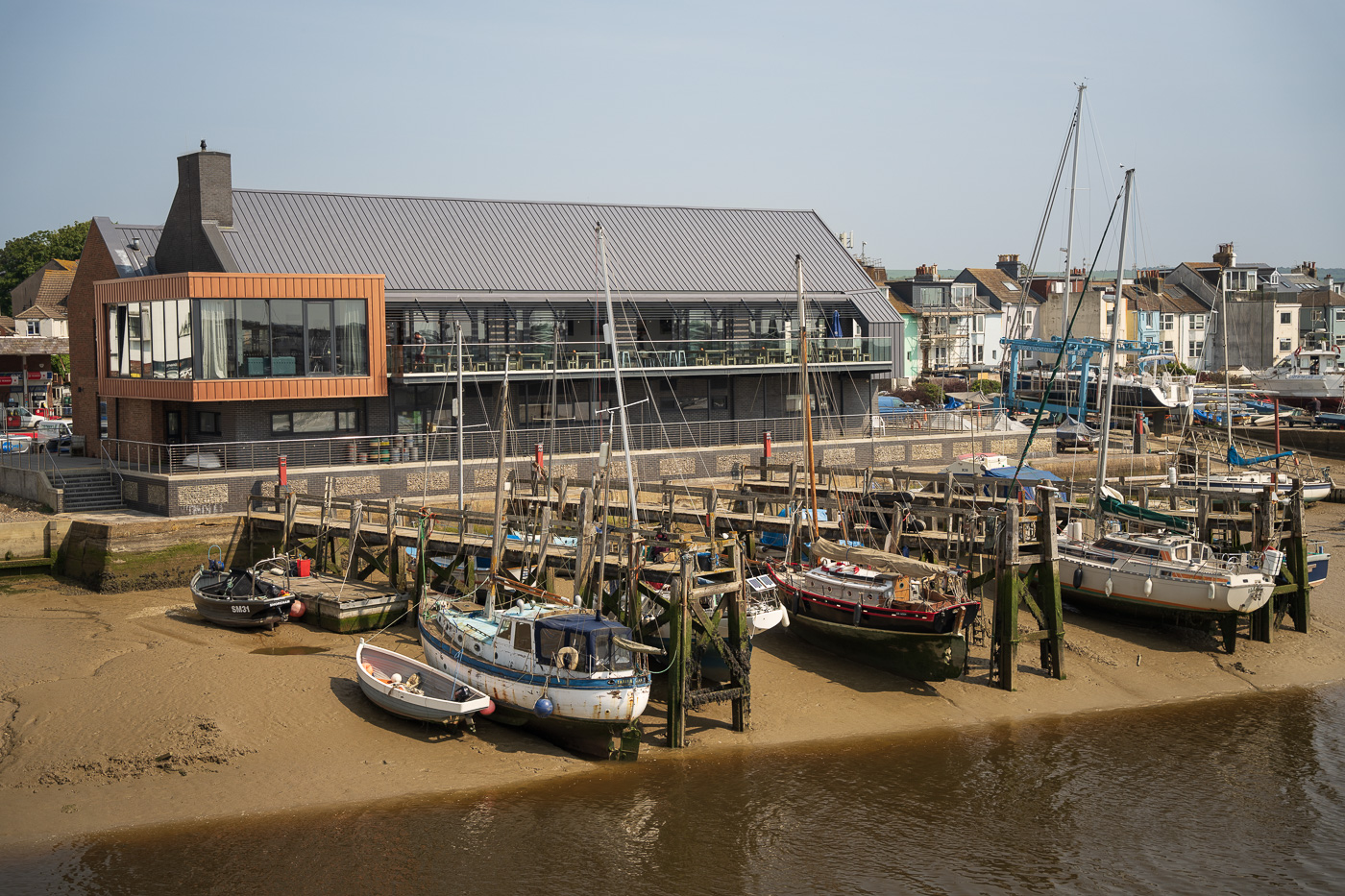
Sample harbour building @50mm. Camera settings: 1/1250 sec. f/2.8. ISO 100
All of the sample images demonstrate razor sharp details throughout the frame, with just some distortion towards the outer corners when shooting at the widest focal widths. It has absolutely no problem rendering 60 megapixels with staggering detail and superb clarity, showing a step up in optical performance from an already superb first generation.
Subject separation and falloff from in-to-out of focus is beautiful, with lovely sharp subjects and soft blurry backgrounds easily achievable.
Aside from the optical design, factors which contribute to image quality include the suppression of image artefacts caused by incidental and backlight. The optical design suppresses flare and ghosting, and additionally a Nano Porous Coating and Super Multi-layer Coating help maintain rich, high-contrast results in difficult lighting conditions.
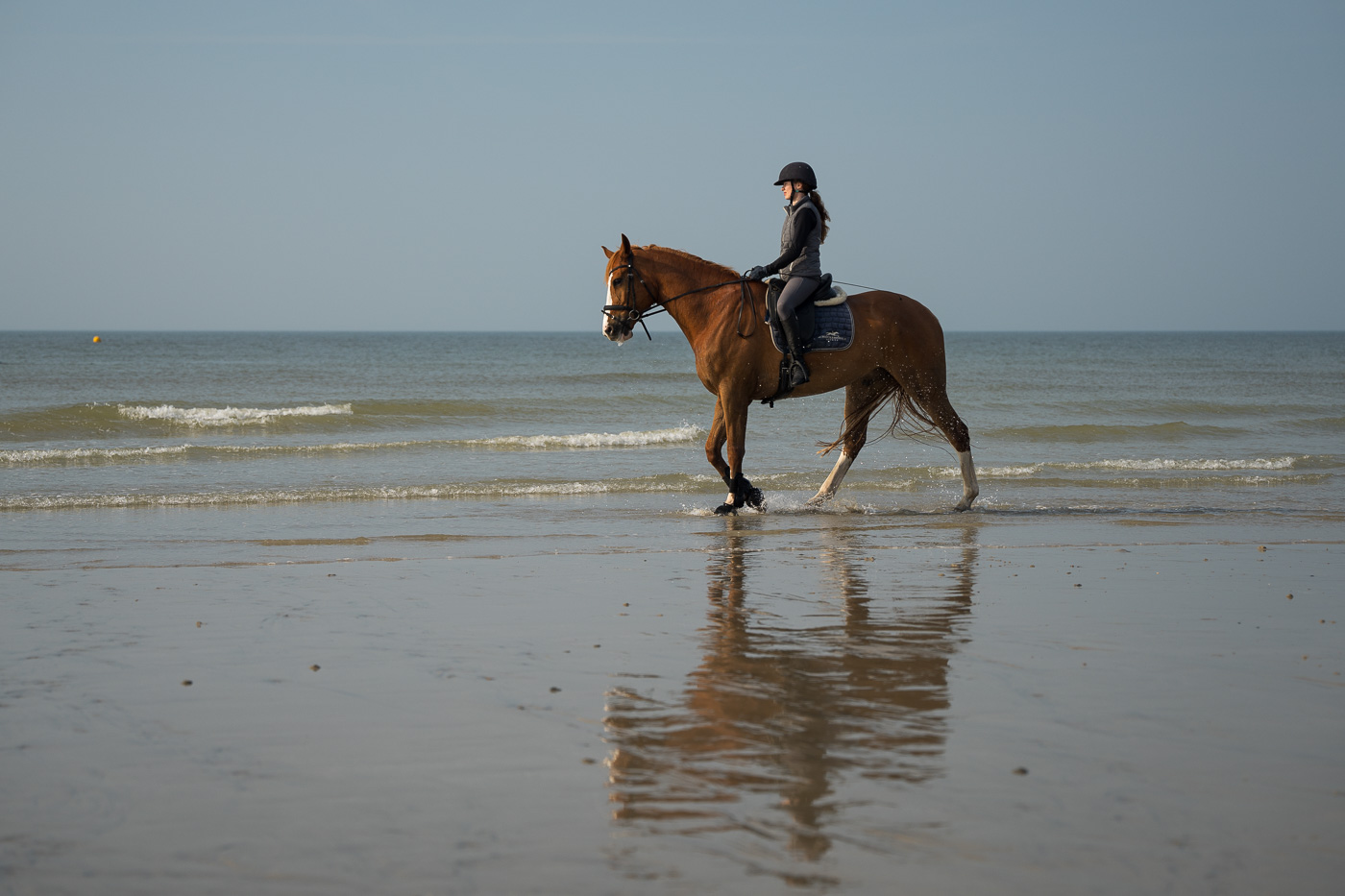
Sample horse riding at beach @70mm. Camera settings: 1/1250 sec. f/2.8. ISO 100
This is great news which benefits all sorts of subjects, whether capturing landscapes with sunstars or portraits with backlighting. In practice the lens did a great job suppressing flare, with some excellent contrast in the majority of situations.
If you enjoy pixel peeping, print images, or simply want pin sharp and enjoyable photos to edit, this is an impressive lens from Sigma, which delivers on every level.

Sample figure on beach @70mm. Camera settings: 1/1250 sec. f/2.8. ISO 1600
What’s new about the Sigma 24-70 f/2.8 AF system?
Since launching the original, Sigma has developed a high-speed AF actuator for premium lenses, which is included in the 24-70 II Art. This High-response Linear Actuator (HLA) debuted in the 50mm F/1.2 DG DN Art and was subsequently used in the 500mm F/5.6 DG DN OS Sports Lens.
The HLA provides extremely responsive AF, with drive speed which is 3x faster than the original. Whether shooting stills or video the Sigma 24-70 2.8 II Art is faster to focus with a beautifully quiet drive system well suited to video capture, which we explore below.
While at the beach I was pushing the lens by capturing fast and erratic moving subjects like running dogs and seagulls in flight. For these types of fast-paced subjects it did a sterling job when combined with Sony’s AI-driven subject recognition, only missing where backlighting was strong or when I was slow to react.
It’s safe to say that the new lens does noticeably outperform the original’s AF speed, and if you shoot quicker moving subjects you’ll be impressed by what you can achieve with the Sigma 24-70mm f/2.8 DG DN II Art.
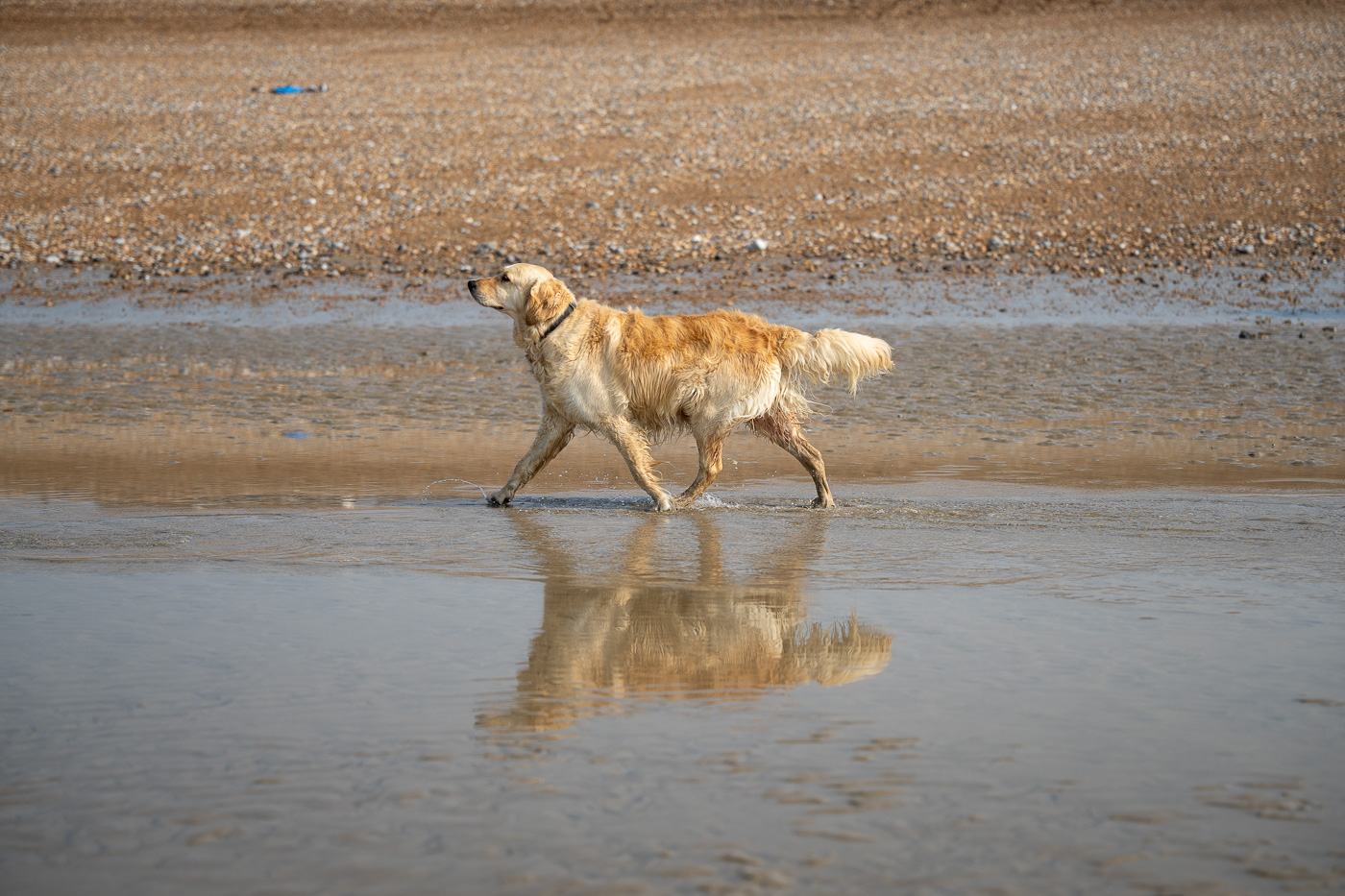
Sample dog on beach @70mm. Camera settings: 1/1250 sec. f/2.8. ISO 100
Is the SIGMA 24-70mm F2.8 DG DN II | Art good for video?
While I didn't record video, to meet the growing needs of E and L-mount filmmakers, the 24-70mm F2.8 DG DN II lens features well controlled focus breathing and a new advanced AF system. A de-clickable aperture ring has also been added for natural exposure adjustments straight from the lens barrel.
The result is a standard zoom, which delivers fast, quiet AF with natural-looking focus pulls when recording video. Additional features for moviemakers include DMF and AF+MF, enabling instantaneous manual focus override when needed. L-mount users can also choose between linear and non linear focus throw to suit their workflow, making for a worthy update for anyone from hybrid creators to dedicated videographers.
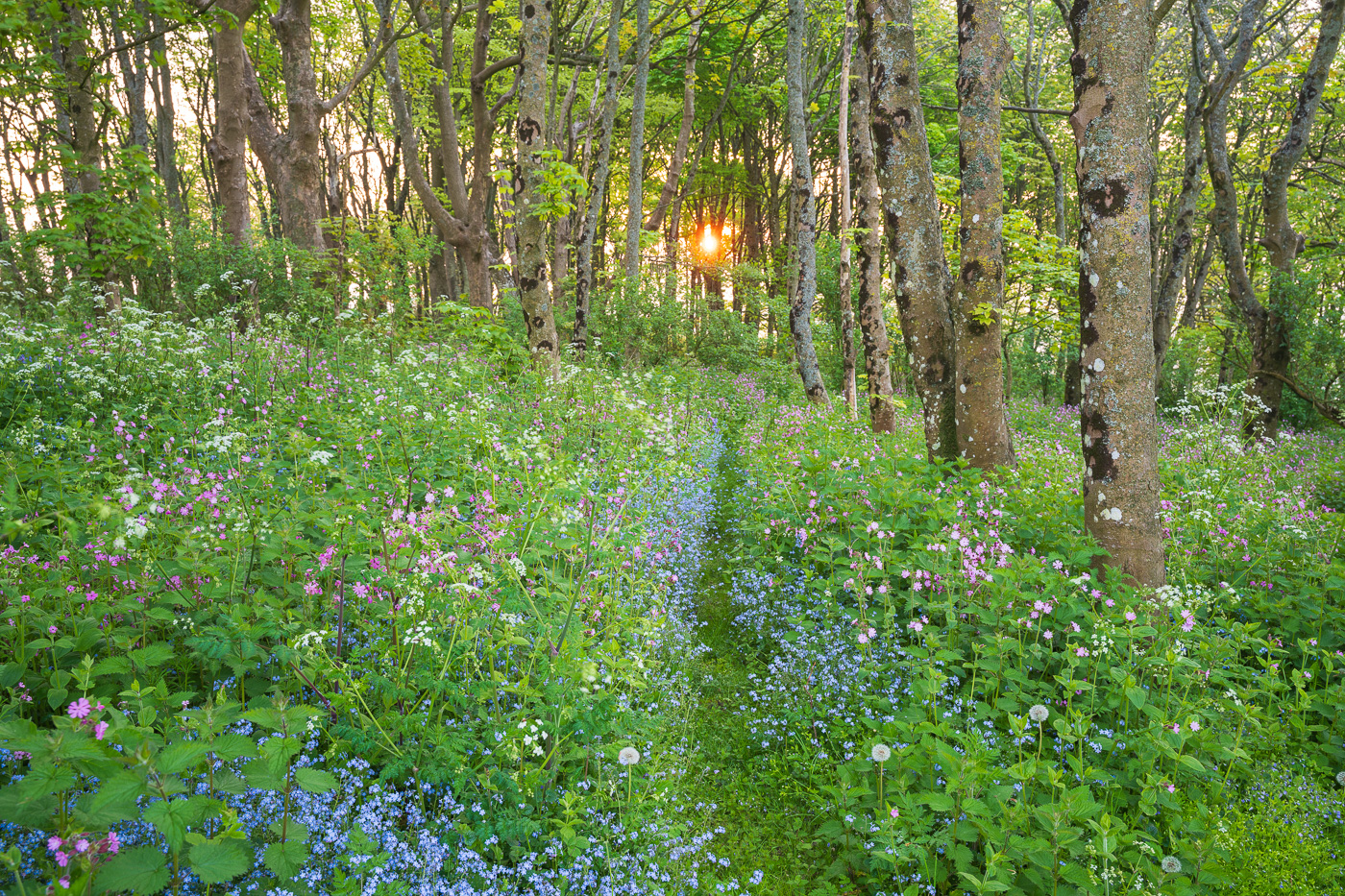
Sample wildflowers landscape photography @30mm. Camera settings: 0.6 sec. f/8. ISO 100 (tripod mounted)
Sigma 24-70mm f/2.8 Art mark 1 vs mark 2 lens specs comparison
The specs comparison between the Sigma 24-70mm f/2.8 Art mark 1 and mark 2 lens highlights the substantial updates made in the newer version. These upgrades make the new model essential for many users, and highly desirable for others, even though the first version was already impressive.
|
|
Sigma 24-70mm f/2.8 Art lens new mark 2 |
Sigma 24-70mm f/2.8 Art lens original |
|
Lens Construction |
19 elements in 15 groups |
19 elements in 15 groups |
|
FLD Glass |
6 |
6 |
|
SLD Glass |
2 |
2 |
|
Aspherical Elements |
5 |
3 |
|
Angle of View (full-frame) |
84.1°-34.3° |
84.1°-34.3° |
|
Aperture design |
11 rounded Diaphragm Blades |
11 rounded Diaphragm Blades |
|
Minimum Aperture |
f/22 |
f/22 |
|
Minimum Focusing Distance |
17cm (Wide) – 34cm (Tele) |
18cm (Wide) – 38cm (Tele) |
|
Maximum Magnification Ratio |
1:2.7 (Wide) – 1:4 (Tele) |
1:2.9 (Wide) – 1:4.5 (Tele) |
|
Aperture ring |
Yes |
N/A |
|
AFL button |
Two |
One |
|
AF actuator |
HLA (High-response Linear Actuator) |
Stepping motor |
|
Filter Size |
82mm |
82mm |
|
Dimensions (Diameter x Length) |
87.8mm x 122.2mm |
87.8mm x 122.9mm |
|
Weight (approx) |
735g |
835g |
Sample bluebells landscape photography @60mm. Camera settings: 1.3 sec. f/11. ISO 100 (tripod mounted)
Build quality and ergonomics
This zoom is designed for field use, boasting premium build quality from metal and plastics, with a barrel that extends when zooming for easy transport. As all other 24-70mm lenses, it lacks optical stabilisation, so using a camera with built-in IBIS helps maintain sharpness when handholding at slower speeds.
The weather sealed barrel features two customisable AFL buttons, a new aperture ring, click switch, lock, and AF/MF switch. The focus and zoom rings are nicely damped and it’s an all-round easy lens to work with, which supports fast workflows and spontaneous shooting.
In real world use there were a number of standout features that elevated useability, starting with the manual focus ring. This was perfect for manual focusing during landscape photography and was very nicely damped with just the right throw to ensure quick and easy pinpoint accuracy.
When walking around with the lens I also found the zoom lock useful on numerous occasions, with a clever disengage by simply zooming the barrel. While walking around with this lens you can engage the zoom lock and let the Peak Design Cuff Charcoal Wrist Strap provide peace of mind.
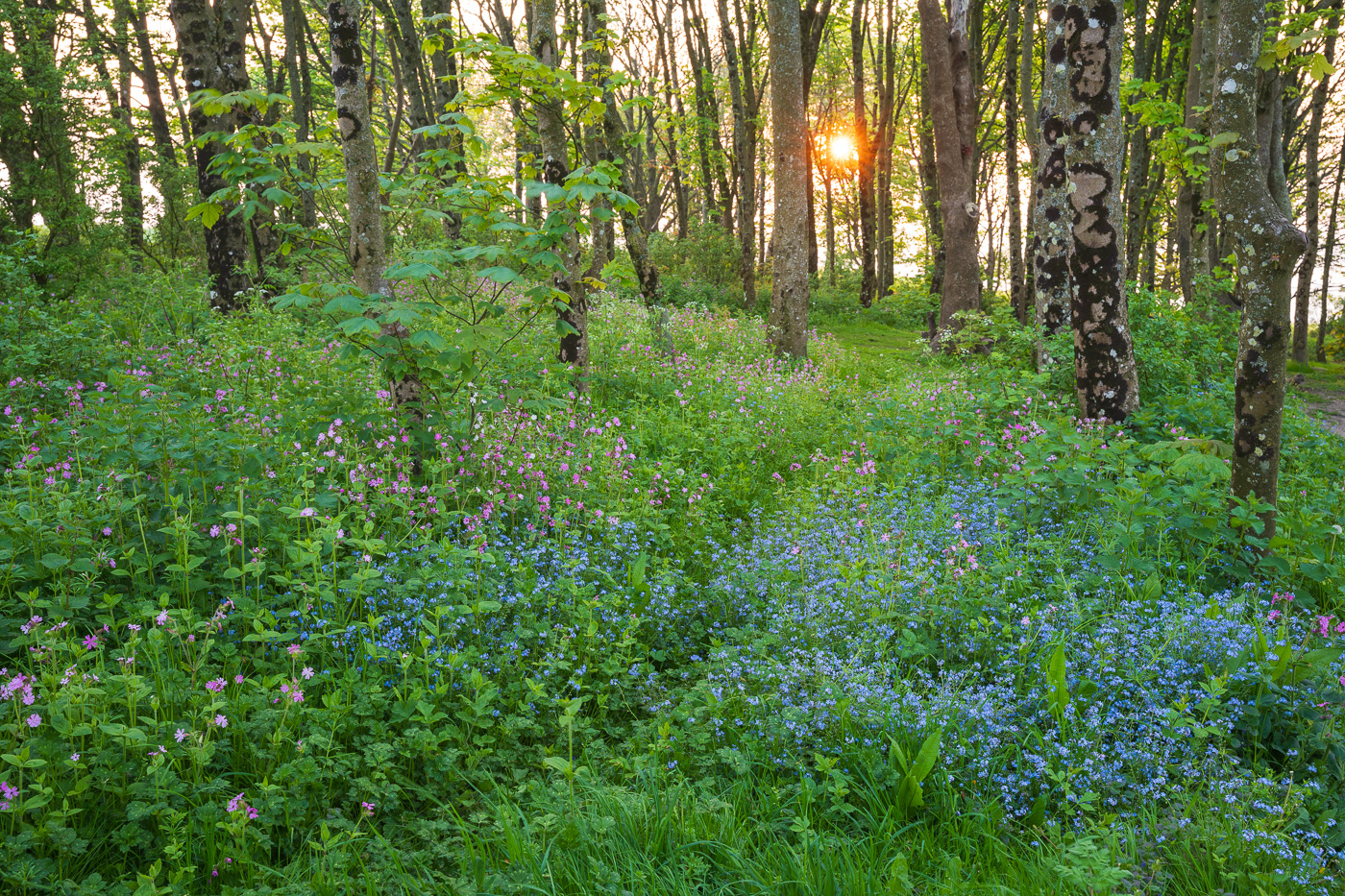
Sample wildflowers II landscape photography @35mm. Camera settings: 1/5 sec. f/9. ISO 320 (tripod mounted)
Best lens accessories
The Sigma 24-70mm f/2.8 Art II keeps an 82mm filter thread, allowing you to continue using existing lens filters. If you're new to this size, you can easily add any type of filter needed, and Sigma themselves make an 82mm WR Cir-Pol filter and an 82mm WR UV.
We recommend to always keep your camera lens clean and maintain image quality, which you can do through a combination of lens blower and micro fibre cleaning cloths.

Sample beach huts @34mm. Camera settings: 1/500 sec. f/5. ISO 100
Conclusion
The Sigma 24-70mm f/2.8 DG DN II Art lens is an exceptional update to one of the most popular zoom lenses for Sony and L-mount users, making it a must-have for enthusiasts and professionals. The second-generation version is not only smaller, lighter, and faster than its predecessor, but also boasts slightly improved image quality and new features that enhance your workflow for both stills and video.
While the first generation was impressive, these upgrades are likely to attract current users looking for even better capabilities. For those new to Sigma Art series, this professional-level lens surpasses standard kit lenses in every respect, ensuring fantastic performance across a diverse range of subjects.
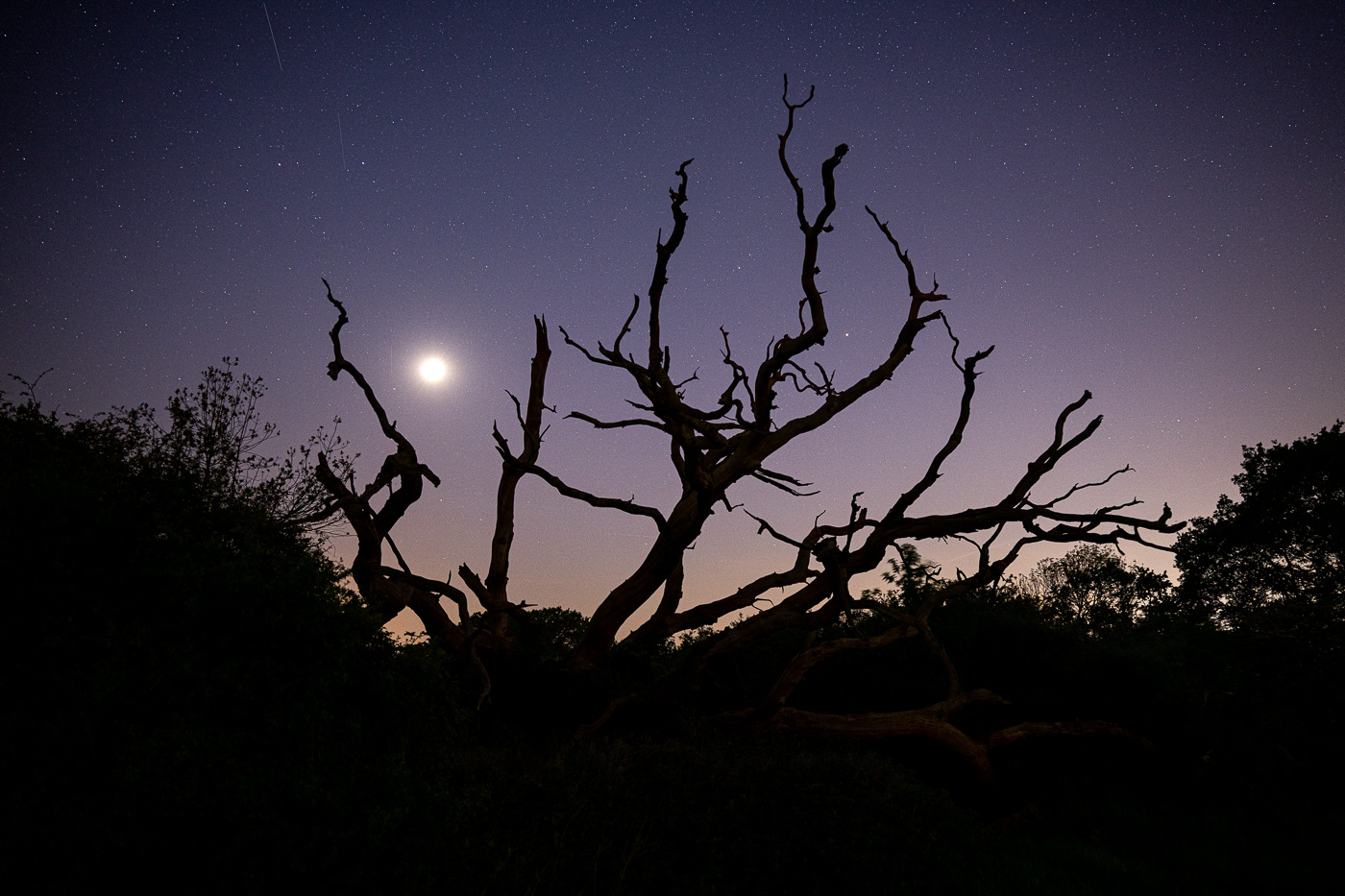
Sample night photography @24mm. Camera settings: 10 sec. f/11. ISO 1600 (tripod mounted)
Reserve your Sigma 24-70mm f/2.8 DG DN II Art Lens for Sony E or Sigma 24-70mm f/2.8 DG DN II Art Lens for L-Mount today and head out to enjoy new levels of creativity and share your images with us on Park Cameras social channels.
If you do decide to upgrade why not sell us your old lens and use the money to offset against the upgrade. The trade-in process is quick, easy and takes all of the stress out of dealing with the unknown on a marketplace.
Share this post:
By Nick Dautlich on 16/05/2024

Trade in your old equipment
Fast and easy trade in service ensures your old gear is collected efficiently and you are paid quickly! It's very simple to trade in your unwanted photography gear. Just head over to our dedicated Sell or Part Exchange page, fill out the details, and we'll get back to you with an offer for your old gear. Take the cash, or put it towards the cost of your new gear. It's up to you! Find out more
sign up to the newsletter
Keep up to date on the latest photography news, events and offers. Sign up now

